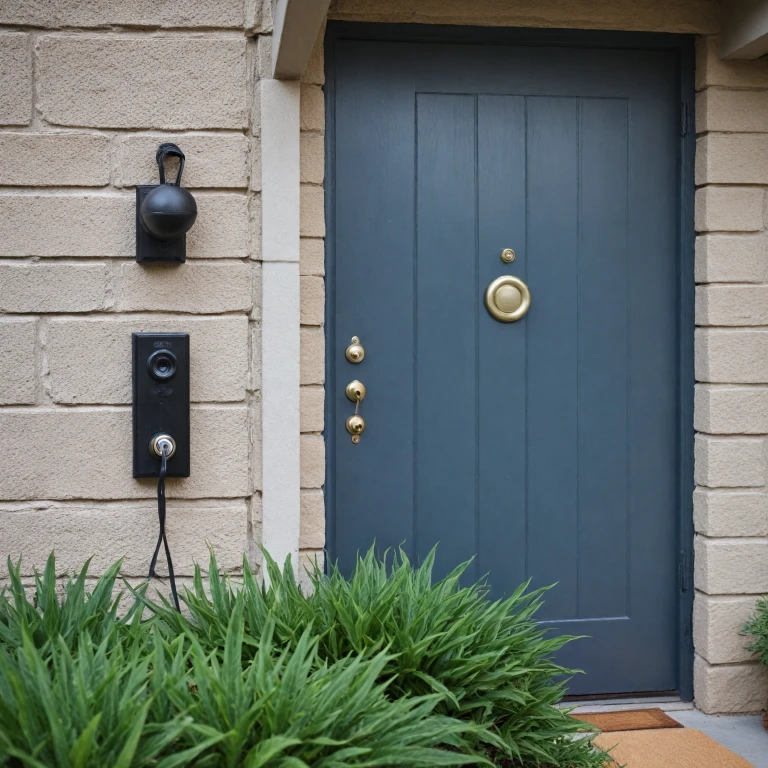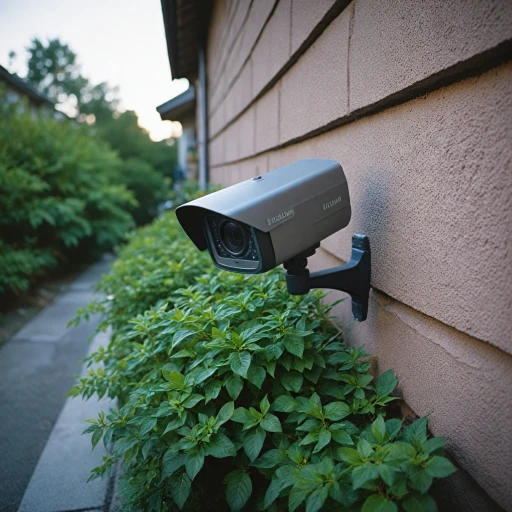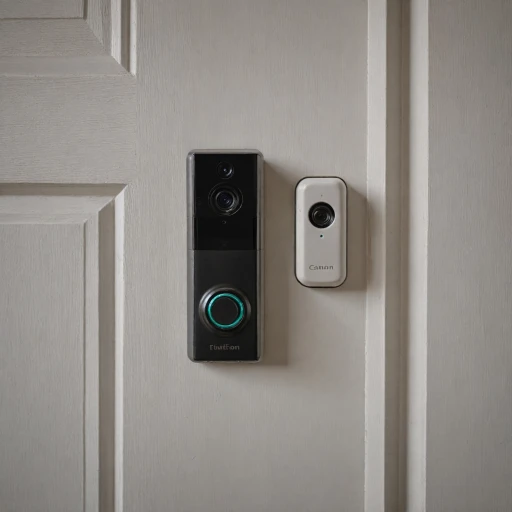Overview of Blink and Ring Doorbells
Introducing Blink and Ring Doorbells
When it comes to keeping your home safe, the selection of doorbell cameras on the market is vast and varied. Among the top contenders are Blink and Ring, both renowned for offering innovative security solutions.Blink's offers focus on providing users with video quality and performance that can stand the test of harsh weather conditions, thanks to their robust designs. Typically, Blink video doorbells are lauded for being battery powered, offering potential pros and cons for installation ease and ongoing maintenance.
Ring, meanwhile, offers a comprehensive range of video doorbells that integrate with other smart home products, creating a holistic security system. Known for their easy-to-use interface, Ring doorbells include wired options that often provide continuous power, proving advantageous over their wireless counterparts.
As you explore which might be the best fit, consider what each brand offers in terms of motion detection capabilities, local storage options, and professional monitoring. For a more nuanced understanding of how these features stack against other systems, check out this guide on smart features and integrations.
Installation and Setup
Getting Started with Installation
When it comes to setting up your new doorbell, both Ring and Blink offer straightforward installation processes, but there are some key differences to consider. Whether you choose a battery-powered or wired option, understanding the installation requirements is crucial for optimal performance.
Wired vs. Battery-Powered Options
Ring and Blink both provide options for wired and battery-powered doorbells. If you opt for a wired doorbell, you'll need an existing doorbell system to connect to, which can offer a more stable power source. On the other hand, battery-powered options provide more flexibility in placement, as they don't require existing wiring. This can be especially useful for renters or those without a pre-existing doorbell setup.
Installation Steps
- Ring: The Ring installation process is user-friendly, with detailed instructions provided in the app. For a wired setup, ensure your existing doorbell wiring is compatible. If you choose a battery-powered model, simply mount the device using the provided tools and sync it with your Wi-Fi.
- Blink: Blink's installation is similarly straightforward. For battery-powered options, mount the doorbell and connect it to the Blink Sync Module for seamless operation. Wired options follow a similar process to Ring, requiring existing doorbell wiring.
Professional Installation
Both brands offer professional installation services if you're not comfortable with DIY. This can be a great option for ensuring everything is set up correctly and your security system is ready to go.
For more detailed guidance on installation, you can explore the benefits of the Eufy doorbell camera, which also offers insights into effective installation practices.
Video Quality and Performance
Assessing the Clarity and Reliability of Visuals
When evaluating the video quality of Blink and Ring doorbells, it is essential to delve into a few critical aspects that define their effectiveness as security cameras. Firstly, Ring offers high-definition video resolution options, famously presenting a 1080p HD view, which provides clear and distinct imaging of visitors and any suspicious activities around your entryways. This ensures that you have a detailed view of the scene, which can be vital in ensuring the security of your home. In contrast, Blink Video Doorbells also deliver impressive video quality. They feature video resolutions up to 1080p with the advantage of infrared night vision, allowing them to capture images in low-light conditions. This feature comes in handy if night-time security is a priority for you. Considering the field of view offered by each brand, Ring Video Doorbells typically provide a slightly wider field view, covering more areas of your front porch and yard. With a broader scope of vision, you're more likely to capture moving objects and people across a wider perimeter, a critical factor if you want maximum coverage. In terms of motion detection capabilities, both Ring and Blink doorbells utilize advanced sensors to alert you in real-time when motion is detected. This feature can be particularly beneficial if you're interested in staying updated about any movement around your home when you're away. For those contemplating wired versus battery-powered options, it is worth noting that Ring offers both variations. Battery powered models provide flexibility as they can be moved easily without the restrictiveness of wiring. Blink, too, emphasizes energy efficiency with its battery longevity claim, reducing the need for frequent battery replacements. Finally, to maximize the functionality of these video doorbells, exploring storage options becomes important. While Ring Video Doorbells provide cloud storage through subscription plans, Blink offers local storage through the sync module, giving users a choice based on their preferences and requirements. For those invested in robust storage solutions, it's valuable to understand these offerings more deeply. For additional insights, you might want to explore the benefits of a Ring Protection Plan, which provides comprehensive coverage including professional monitoring services.Smart Features and Integrations
Smart Technology and Compatibility
When considering smart features, both Ring and Blink video doorbells offer impressive technology that enhances home security. Ring video doorbells are well-known for their wide range of smart integrations, especially with Amazon Alexa. This allows users to control their doorbells and other Ring cameras using voice commands, making it a seamless addition to any smart home setup.
Motion Detection and Alerts
Motion detection is a crucial feature for any doorbell camera, and both brands excel in this area. Ring offers customizable motion zones, enabling users to focus on specific areas and reduce unnecessary alerts. Blink video doorbells, on the other hand, provide reliable motion detection with their sync module, ensuring timely alerts are sent directly to your smartphone.
Video Storage Options
Storage is another key consideration when comparing Blink and Ring. Ring primarily offers cloud storage, which requires a subscription plan to access recorded footage. This can be a deciding factor for those who prefer local storage options. Blink, however, offers both cloud and local storage through its sync module, providing more flexibility for users who want to avoid ongoing costs.
Battery Life and Power Options
Battery life is a significant aspect of smart doorbells, especially for those who prefer battery-powered options. Blink video doorbells are known for their long-lasting battery life, making them ideal for users who want a low-maintenance security system. Ring offers both battery-powered and wired options, catering to a broader range of installation preferences.
Night Vision and Field of View
Both Blink and Ring offer night vision capabilities, ensuring clear video footage even in low-light conditions. However, the field of view can vary between models. Ring video doorbells typically offer a wider field of view, providing comprehensive coverage of your entryway. This can be a significant advantage for those who prioritize extensive surveillance.
Cost and Subscription Plans
Price Considerations and Subscription Plans
When deciding between Blink and Ring doorbells, understanding the cost implications and ongoing subscription plans is crucial. Both brands offer varied price points and subscription options tailored to different user needs.- Device Pricing:
- Blink devices, often regarded for affordability, offer a lower entry point with their battery-powered options, making them suitable for budget-conscious consumers. Blink's video doorbells have an attractive price range for those seeking basic security functions.
- Ring doorbells, especially the Ring Video Doorbell Pro models, tend to be priced higher due to their expansive feature set. Features such as advanced motion detection, improved field view, and compatibility with various smart home integrations contribute to the increased cost.
- Subscription Plans:
- Both Blink and Ring offer subscription services that unlock enhanced features like extended video storage and professional monitoring.
- Blink’s Sync Module allows free local storage with the option to subscribe to cloud services for added convenience. The plans are typically less expensive, which can appeal to users prioritizing local storage and looking to minimize ongoing expenses.
- Ring’s Protect Plans offer more comprehensive security camera options, including 24/7 professional monitoring and extended cloud storage. Though costlier, these services enhance the utility of their doorbell cameras by providing an elevated level of security and support.
User Reviews and Feedback
{"": "User Impressions and Real-World Experiences"}" + "" + "Overall Satisfaction: Users of both Blink and Ring doorbells often highlight their effectiveness in enhancing home security. With video doorbells, you can keep an eye on your property even when you're not home, which is a feature many find invaluable." + "Performance: Those who prioritize video quality and performance tend to lean towards Ring, as it offers superior resolution and night vision capabilities. Ring users frequently commend the clear video footage that aids in identifying visitors or potential intruders effectively." + "Installation and Setup: As noted previously, installation can differ based on the model. Some users prefer the hassle-free setup of Blink’s battery-powered options, especially for those locales where wiring isn't feasible." + "Smart Features: Integration with existing smart home ecosystems is often praised in user reviews. Blink's sync module can be a highlight for those already leveraging Amazon's ecosystem, while Ring's compatibility with a wider range of security cameras and systems is a frequently noted advantage." + "Cost and Subscription: Many users emphasize the importance of understanding the cost implications, especially if opting for cloud storage solutions offered by both companies. Ring provides a comprehensive professional monitoring plan, which, while bearing additional costs, delivers peace of mind through professional security oversight." + "" + "
Both Blink and Ring have built a reputation for reliably enhancing security through their doorbell cameras and security cameras. Your choice may ultimately depend on aligning specific features and integrations to your needs, underscoring the importance of a comparative advantage when assessing each option."











